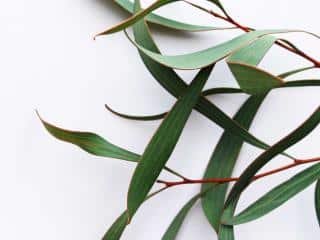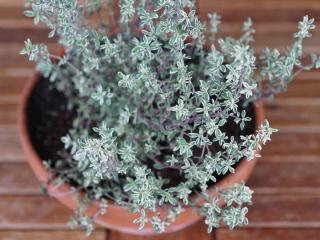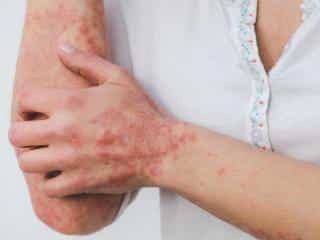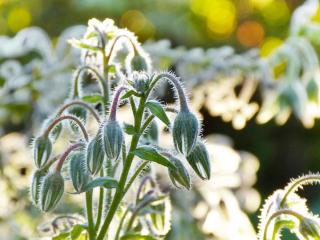

The coming and going of seasons, toxic gases, polluted air or contact with allergens all sometimes trigger respiratory and cutaneous infections.
A major respiratory infection which many suffer of is bronchitis, an inflammation of the lungs. The most common skin infection, on the other hand, is dermatitis.
How do these infections appear? What causes them? Can plants help do away with these conditions?
Infections and Herbalism: what are the key facts to be aware of?
 Get to know this respiratory infection
Get to know this respiratory infection
Bronchitis is a very common disease that almost every human being experiences at least once in a lifetime.
There are two types of disease:
– acute bronchitis, due to a virus that usually appears after a flu or cold that wasn’t properly treated.
– chronic bronchitis which is triggered by long-term exposure to noxious fumes (tobaccos, pollution, etc).
Whichever of these two forms you’re dealing with, the symptoms are often similar although a few points set them apart.
Most common ones are:
– thick, wet cough that produces mucus. The color of the mucus or phlegm is either white, yellow-gray, or greenish.
– quickly getting out of breath with wheezing.
– pain in the chest, fatigue and fever.
Although many remedies exist to treat bronchitis, many people aren’t aware that there is a vast number of plants whose health benefits need not be proven anymore. Mainly, the following are relevant:
 Eucalyptus used internally in the form of infusions, or used externally by being rubbed on the body. Indeed, eucalyptol, the essential oil that leaves contain (80% content) clearly reduces cough and expectoration.
Eucalyptus used internally in the form of infusions, or used externally by being rubbed on the body. Indeed, eucalyptol, the essential oil that leaves contain (80% content) clearly reduces cough and expectoration.It is a good idea to infuse just under 0.1 oz (3 g) of dried leaves in 5 fl. oz. (150 ml) boiling water and drink 2 cups a day.
For topical use, simply pour 15 to 20 drops essential oil in 0.85 fl.oz. (25 ml) plant-based oil and friction on the chest 3 times a day.
 The benefits of common ivy are appreciated to help the patient breathe. Indeed, 1 teaspoon of dried leaves in 5 fl. oz. (150 ml) boiling water for 10 minutes, with 3 cups drunk a day, increases air volume in the lungs and spaces bouts of cough.
The benefits of common ivy are appreciated to help the patient breathe. Indeed, 1 teaspoon of dried leaves in 5 fl. oz. (150 ml) boiling water for 10 minutes, with 3 cups drunk a day, increases air volume in the lungs and spaces bouts of cough.Definition of dermatitis or eczema
Whether due to internal or to external factors, dermatitis is a skin disease that is often encountered.
Persons suffering of dermatitis live through daily “hell” due to the unbearable itchiness, rashes and irritations which appear.
Where dermatitis comes from
 There are two main reasons as to why someone would develop dermatitis:
There are two main reasons as to why someone would develop dermatitis:
How to recognize dermatitis
Main dermatitis symptoms are itchiness, red patches, small pimples and crusts forming on the skin, in the end giving skin a grainy or rough appearance.
Plants can help get rid of dermatitis
 Thanks to their anti-inflammatory properties, suncup and calendula act upon the skin and remove the roughness.
Thanks to their anti-inflammatory properties, suncup and calendula act upon the skin and remove the roughness.
Correct dosage for effective results
All these plants are to be used externally or topically:
Additionally, borage and suncup can also be ingested and used internally.
As a patient, simply swallow suncup or borage oil capsules once or twice a day before meals to avail of their benefits.
Good to know about infections
Plants definitely have health benefits but it is strongly recommended to check with your consulting physician or an expert for most effective and long-term results.